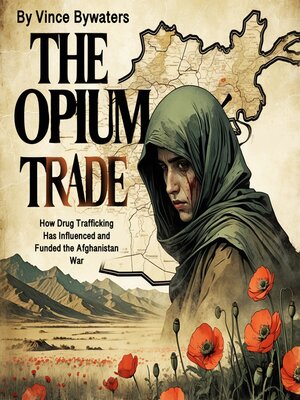The Opium Trade
audiobook (Unabridged) ∣ How Drug Trafficking Has Influenced and Funded the Afghanistan War
By Vince Bywaters

Sign up to save your library
With an OverDrive account, you can save your favorite libraries for at-a-glance information about availability. Find out more about OverDrive accounts.
Find this title in Libby, the library reading app by OverDrive.



Search for a digital library with this title
Title found at these libraries:
| Library Name | Distance |
|---|---|
| Loading... |
This audiobook is narrated by a digital voice.
The history of the opium trade in Afghanistan is deeply entwined with the nation's past, shaped by economic, political, and social factors that have made it a central part of the Afghan economy. Opium poppy cultivation in Afghanistan dates back centuries, but its rise as a major global drug trade began in the 20th century, coinciding with the geopolitical shifts that swept through the region.
Historically, Afghanistan's mountainous terrain and isolated villages provided ideal conditions for opium poppy cultivation. Farmers in remote areas had limited access to markets and infrastructure, making opium cultivation an attractive option due to its high profitability. Unlike traditional crops, opium poppies could be easily grown in harsh conditions, and their refined product—morphine and heroin—was highly sought after in global markets. As Afghanistan's political landscape remained volatile throughout the 20th century, including periods of civil unrest, foreign invasion, and the rise of warlords, the opium trade flourished as a means of financial survival for many local farmers and armed factions.
During the 1970s and 1980s, the Afghan opium trade experienced a significant surge, largely due to the Soviet invasion of Afghanistan. The Afghan resistance, largely funded and supported by the U.S. and its allies, relied heavily on opium profits to fund their insurgency. As the Soviet Union struggled to maintain control, the drug trade became a crucial financial lifeline for various mujahideen groups. The American CIA reportedly turned a blind eye to the trade, focusing instead on the larger strategic objective of defeating the Soviet forces. During this period, Afghanistan became one of the world's largest producers of opium, a status it would retain for many years to come.







